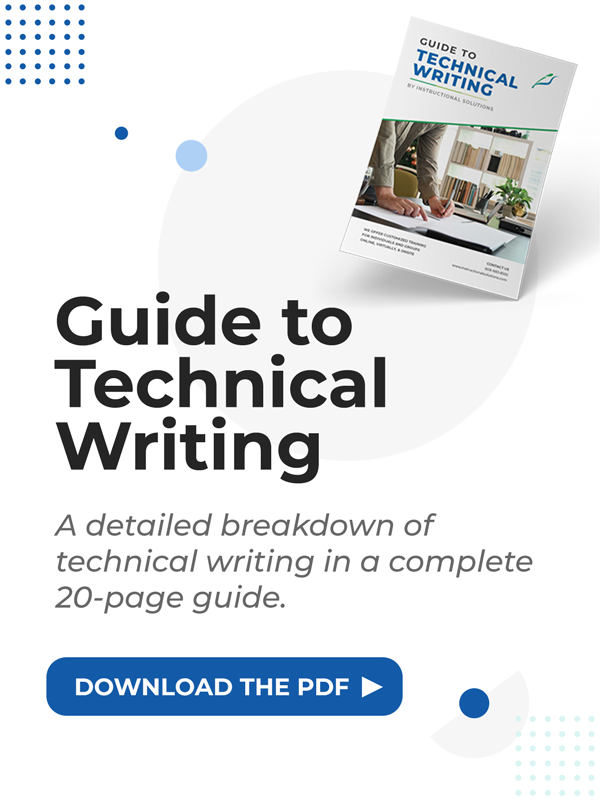How to Format Your Business Document: A Step-by-Step Guide

Originally published February 14, 2022, updated May 26, 2025

Table of Contents
Table of Contents
You are ready to craft your document. You’ve taken the time to connect the content to the needs of your audience, and you are ready to write. But you are stuck on your business document format. What’s the most effective and efficient way to format your document so your content shines?
Business Document Format: Step-by-Step Guide
Always remember that your readers are busy, so you have to make your documents easy to skim and still come away with a solid understanding. Each document is different, but some key similarities should be considered for a standard format. These are:
- Start with the most important details
- White space is important
- Use lists
- Keep your paragraphs short
- Use headings and subheadings
- Maintain visual consistency
- Close with visual clarity
Whether you’re writing a formal document or an internal email, let’s go through each business document format consideration and its critical role in your document.
Start with the most important details
You need to put the most important information right at the beginning of your document.
In an email, this would be right in the first or opening paragraph. You may want to start with a warm opening, depending on the audience, but then you should immediately get to the point of your email. A business letter is very similar.
Learn how to not only format but also write any business document efficiently and effectively.
Formal (letter) example:
Congratulations! You have been accepted to Harvard University for Fall 2022.
Slightly less formal (email) example:
I hope you had a great holiday with your family. I wanted to schedule a meeting to review our top candidates for the open position.
Business reports (in whatever form) should also start this way. This will often be an executive summary or key takeaways section.
This is very effective in most situations. However, there are writing situations where it won’t work well. It is best to buffer or soften your message whenever you have negative or sensitive information that could negatively impact the reader. Learn more about how to deliver bad news.
Hint: Improve your overall communication skills by taking an online writing course.
White space is essential
White space is exactly what it sounds like (even when it isn’t white). It is the space between your words, paragraphs, and visual elements. White space allows the eyes to “breathe” and makes documents much easier to read by breaking up the text areas visually. If your readers are super busy, white space between sections allows for an easy skim.
Ample white space is critical for effective business document format for many different types of documents. Marketing plans, financial documents, slide decks, emails, letters, proposals, and technical reports are all more effective, easier to read, and easier to absorb when there is appropriate white space.
White space does not include using two spaces after a period. Learn more about this highly-debated grammar rule.
Use lists
One of the easiest ways to incorporate white space and make your business document format more effective is to use lists. If you are introducing a certain number of items, use a numbered list. Otherwise, use bullets. This blog post details how to write a better bullet point list.
Lists make it easier for readers to identify the items discussed (e.g., sales figures), absorb content, and pay attention to what is important. Visually, they pop and delineate the information presented. Lists are particularly helpful for document types like client agreements, financial documents, transactional documents, and presenting sales figures.
Not sure how to punctuate your bulleted lists? This blog post will guide you.
Keep your paragraphs short
Let’s look at the same information presented with multiple paragraphs and one single paragraph.
Another simple way to add white space to your documents is by keeping your paragraphs short.
You should have no more than seven lines (not sentences!) of text in each paragraph in electronic documents. If readers see a big block of text, they are likely to read the first line and jump over the rest.
Because we are all working from different-sized screens (desktops, laptops, tablets, and phones), it’s best to break paragraphs whenever possible!
Below is this same section written without paragraph breaks. Notice how much harder it is to read!
Another simple way to add white space to your documents is by keeping your paragraphs short.
You should have no more than seven lines (not sentences!) of text in each paragraph in electronic documents. If readers see a big block of text, they are likely to read the first line and jump over the rest. Because we are all working from different-sized screens (desktops, laptops, tablets, and phones), it’s best to break paragraphs whenever possible!
Especially in any document that will be read on-screen in an electronic format, aim for seven lines or less for each paragraph. Keep your electronic format easy to read. This formatting strategy is also a good standard for paper documents.
Use headings
Headings and subheadings are other key features of effective business document formatting. They break up content and guide the reader through the document. They make it easy for busy readers to skim through and come away with a decent understanding of the content.
Notice the headings in this article. Each summarizes the information in each section, which allows readers to skim and jump and easily glean the overall content.
Maintain visual consistency
While it can be tempting to add a lot of visual elements to your business document format, a mix of bold, italics, and color throughout a document makes the document harder to read. Too many different emphasis techniques bounce the eye around the page and prevent the eye from immediately seeing the emphasis area.
Instead, choose one design element for main points, such as bold, and another for sub-points, such as italics. Maintain consistency with your business document formatting to make it easier to skim for understanding. This is especially important for critical documents like business reports.
Note: Fonts for business documents are also important for visual consistency. We recommend using an easy-to-read font such as Times New Roman or Arial.
Here are some great visual suggestions for email writing.
Close with visual clarity
If your document needs a response from time to time, make sure your closing visually elicits the desired response.
In an email, this could be a “Next Steps” heading before the last paragraph. (Verify that the content below the heading is related and clear!) In a cover letter, this could be a final paragraph with a thank you and contact information.
Make it very easy for your reader to know what to do next by visually highlighting it.
In summary
Your documents are undoubtedly full of valuable information, so ensure you use effective formatting to allow information to shine through. Here are a few more helpful formatting tips:
- Left-align your text to follow a block format. The block style is typically used for business letters but can also be applied to most business documents.
- During your document’s planning stages, consider the business requirements and the audience's needs for every business document you create. Your purpose and their needs should help guide your formatting.
- Check your document’s format again during the editing process to ensure you're meeting your reader's needs visually.
Instructional Solutions courses cover formatting in business writing as well as many other grammatical and stylistic topics to help you become a more effective and efficient business writer and improve your overall communication skills. All courses also include instructor feedback on participants' actual writing.
Read our full Guide to Business Writing.

